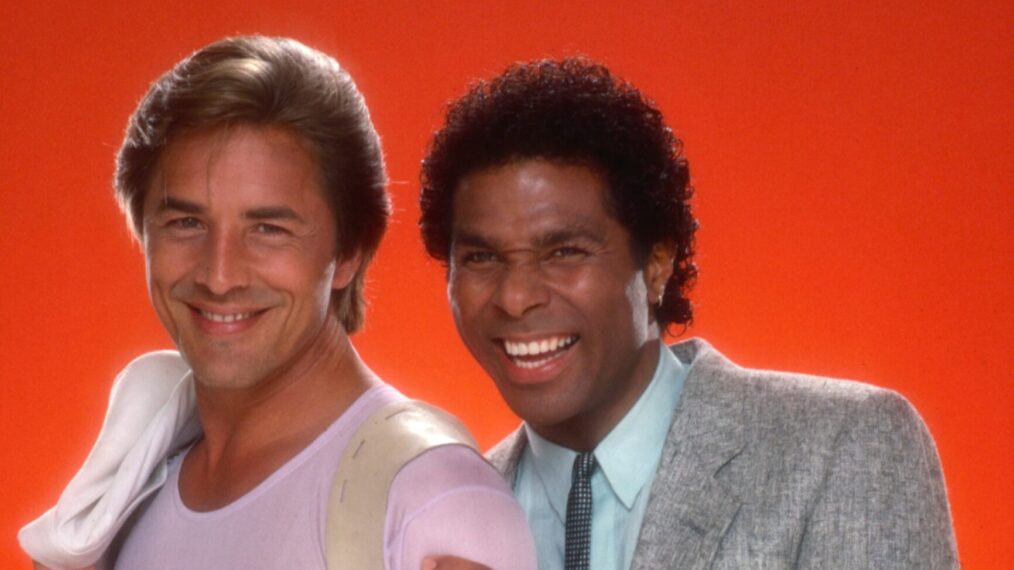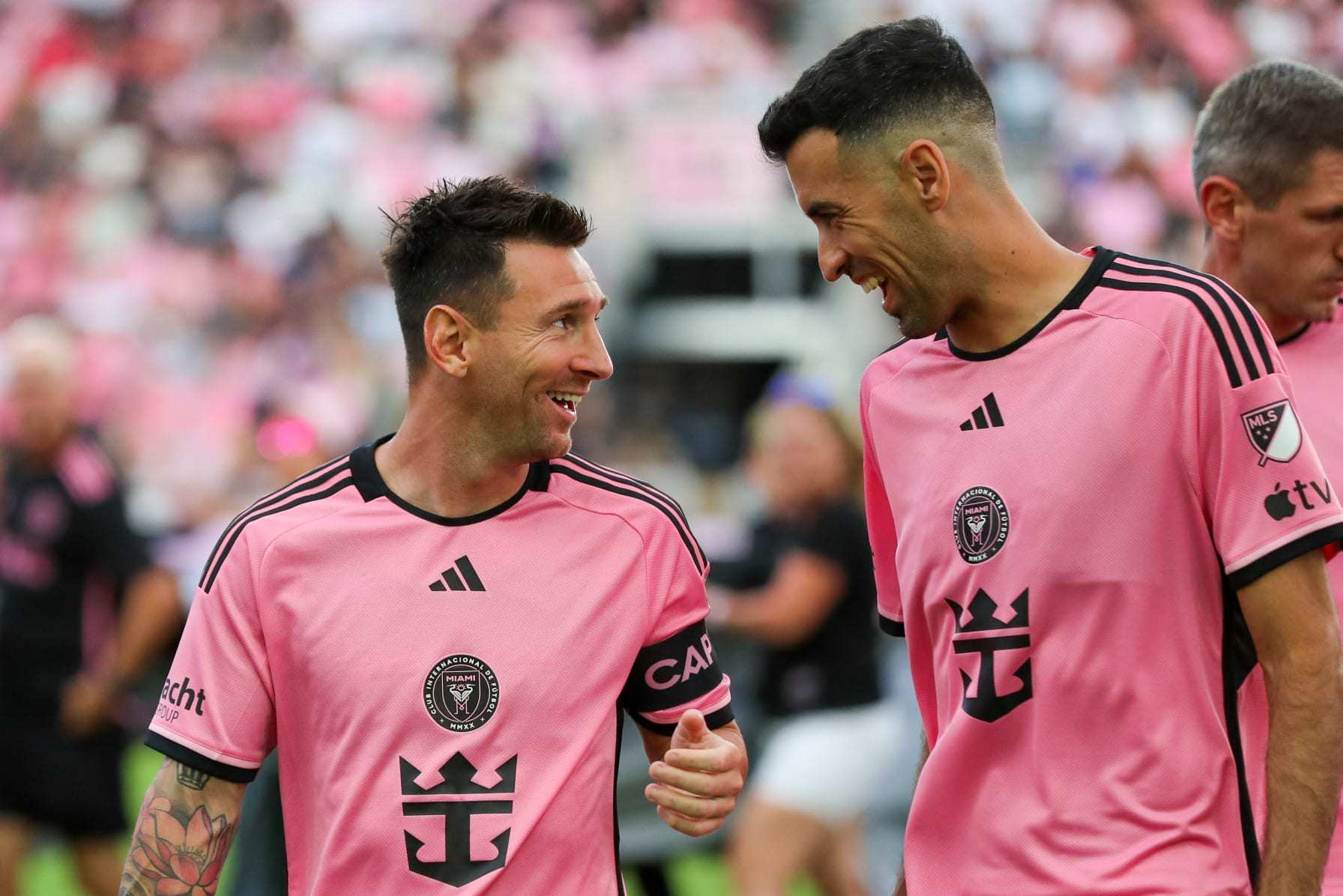‘Miami Vice’ Made Cop Shows Hot & So Cool!
Mario Casilli/TV Guide/Courtesy Everett Collection
Everything on Miami Vice was sleek, angular and fast — the speedboats, the cut of the clothes and the noir dialogue. Watching it was like the best Friday night ever. According to legend, the idea for Miami Vice started with a note scrawled on a brainstorming memo by Brandon Tartikoff, the head of NBC Entertainment: “MTV cops.” Music videos playing 24/7 over on MTV were defining the look of the decade, and Tartikoff saw a way to give the cop show a whole new look and feel. Another origin story has series executive producer and creator Anthony Yerkovich coming up with the concept after hearing about asset forfeiture, which allowed cops, as part of their undercover duties, to dress way above their pay grade. To look the part of the drug dealers, pimps and gunrunners they’re chasing, cops could drive Ferraris and wear Armani suits. But it was executive producer Michael Mann who would marry those concepts into a neo-noir show that changed the face of cop shows and proved addictive for viewers.
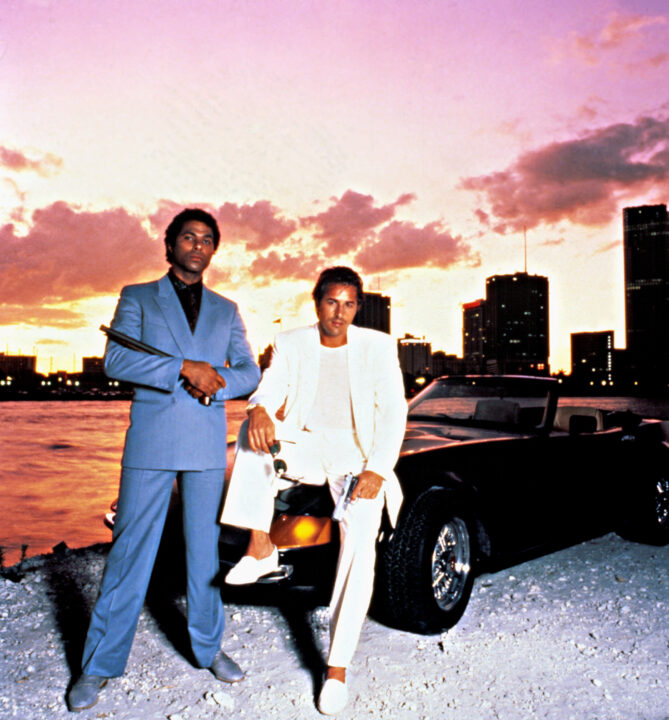
Everett Collection
Brian De Palma’s Scarface was just out in theaters, portraying Miami as a chronic hub for the drug industry, and its related businesses like bail bondsmen and money-laundering banks. Mann saw the opportunity and jumped on it. And instead of the usual practice of shooting in Los Angeles and then making it somehow look like the show’s fictional location, Mann wanted episodes filmed in Miami. When approached about the series, Miami officials hated the title. Hanging the notoriety of drug trafficking on the Magic City was not the vibe they were hoping for. Ironically, though, the popularity of Miami Vice led to a huge influx of tourism. Producers originally wanted Nick Nolte or Jeff Bridges for the role of Sonny Crockett, but settled on Don Johnson after he screen-tested with Philip Michael Thomas. Pairing beach bum with New York dandy proved a winning combination.
Mann spent a hefty amount of the show’s budget (about $1.3 million per episode, making it one of the most expensive shows in TV at that time), not on salaries but on the overall look and feel of the show — production, costumes and soundtrack. For the look, it was a revival of Miami’s Art Deco period with electric jolts. The palette was turquoise, lavender, white, gray and black, on suits and bikinis, cars and walls. No earth tones were allowed. Many of the Miami shooting locations were run down, so Mann had them spiffed up with fresh paint. Every surface seemed to shimmer, from the turquoise waters cut by speedboats to the glistening of neons reflected off the wet hoods of Ferraris.
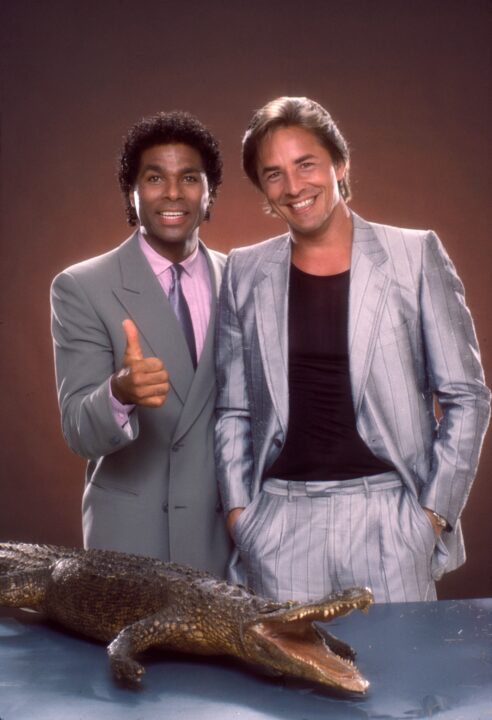
Mario Casilli/TV Guide/Courtesy Everett Collection
Matching these production values were the impeccable fashions worn by the stars and their drug-kingpin foils. Top designers of the day including Gianni Versace and Hugo Boss were consulted to give the show’s stars a cutting-edge look. Crockett popularized the “V-neck T-shirt under an Armani jacket” style, going sockless with sneakers and two-day-old facial stubble; Tubbs was the East Coast gangster with shiny double-breasted suits and impeccable shoes. Their look became wildly popular with fans who eagerly repeated it.
For music, Miami Vice blazed a new trail by paying $10,000 or more for rights to play original songs rather than the usual canned stuff. The show imported the hottest music of the decade, featuring New Wave, pop, rock and R&B bands and artists including U2, Duran Duran, Foreigner, Billy Idol and Tina Turner. Segments featuring the songs were often recorded like music videos; the most memorable is a scene of Crockett and Tubbs driving to a late-night showdown accompanied by Phil Collins’ “In the Air Tonight.” The Miami Vice soundtrack album, featuring music by Jan Hammer with Glenn Frey’s “Smuggler’s Blues” and “You Belong to the City,” spent 11 weeks atop the Billboard charts in 1985; Hammer’s theme song won two Grammys.
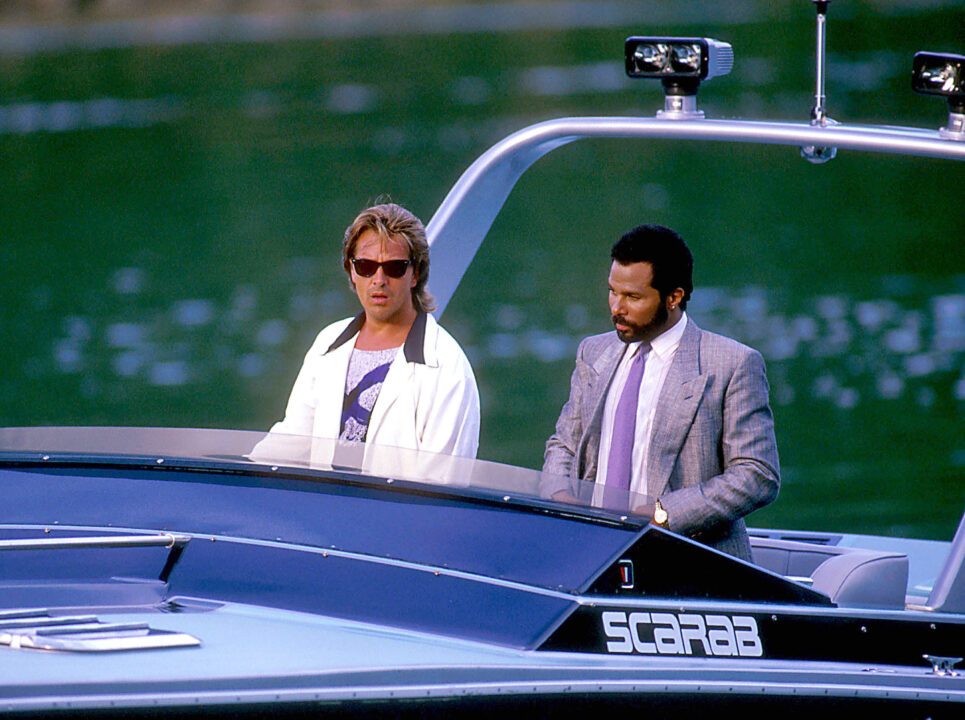
Ray Fairall/Courtesy: Everett Collection.
Then there were the cars and boats, all supposedly fresh from law enforcement’s property seizure vault. There was the 40-foot Endeavor yacht Sonny lived on and the Wellcraft Scarab cigarette boat they rode to slice through Biscayne Bay. Streetside, the boys took turns driving a black Ferrari Daytona Spyder, Cadillac Coupe de Ville and white Ferrari Testarossa. The bad guys also tooled about in a stable of jaw-dropping boat and car muscle.
Miami Vice had its best year in Season 2 (1985-86), finishing ninth in the ratings; but in Season 3 it was moved to the 9pm Friday slot opposite Dallas, and ratings begin to fall after that. After five seasons, the show was canceled.
But for its run through the ’80s, there was nothing more cool — or hotter — than Miami Vice.
